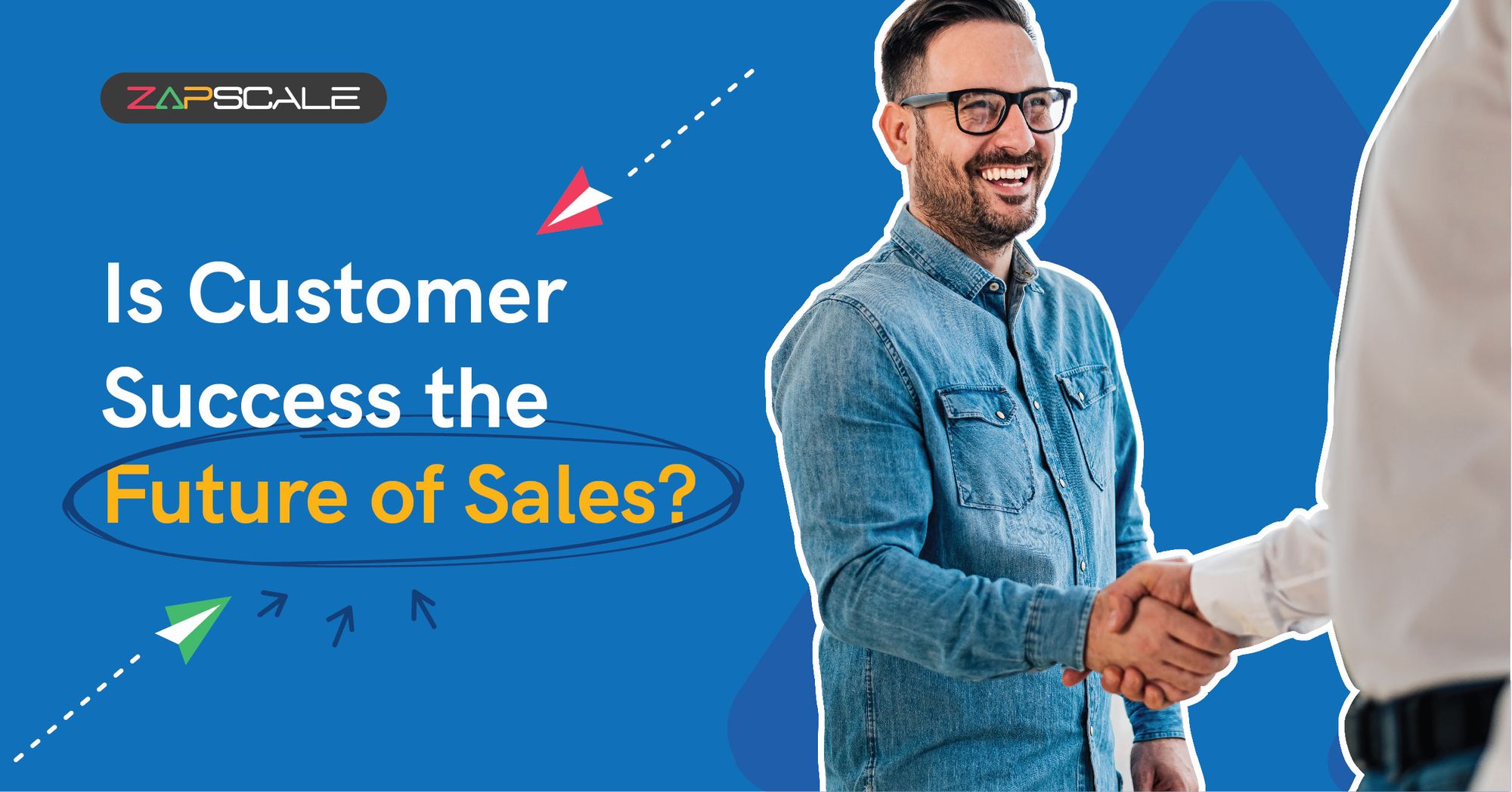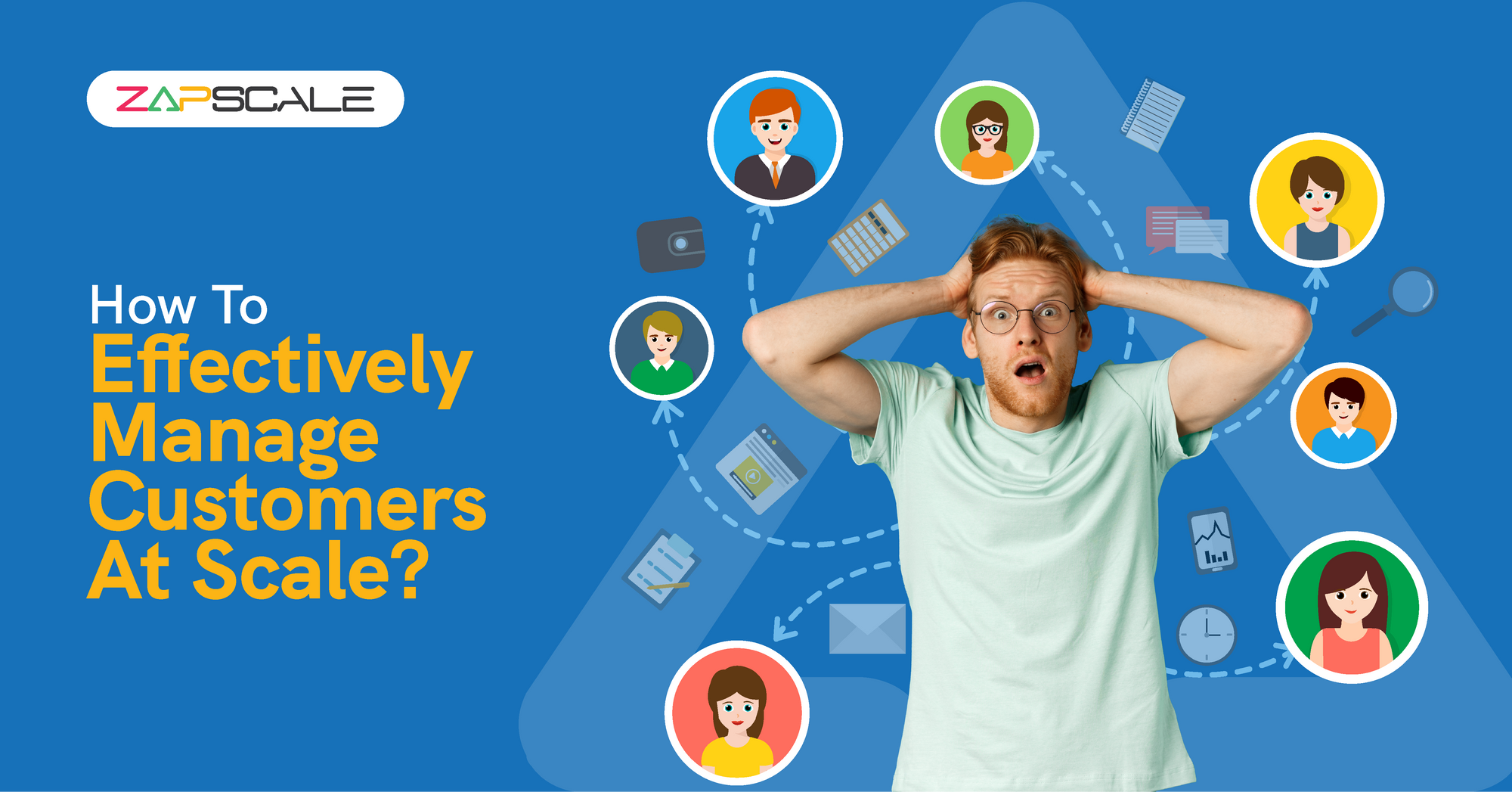CATEGORY > Customer Success Management
Is Customer Success the future of Sales?

The phrases “Sales is the survival” and “Customer is the king” both go parallel for every business to become successful and sustainable. To integrate both ideas, let’s briefly understand the impact customer success has had in the past on sales and how can it play a key role in a successful sales strategy in the future.
Customer success today is not only about catering to and optimizing customer journey post-sales but a relationship that establishes right from the first day a potential customer interacts with your product.
What was the approach to Customer Success in the early times?
Earlier, the approach to customer success was more product-centric where the focus was mostly on completing the assigned tasks and deliverables and ensuring a successful product implementation instead of also focusing on the customer’s perception of value received.
This created a gap between the product’s vision and the customer’s goals which lead to failed product implementations and lesser renewals, ultimately impacting the business growth. All this led to a realization that maybe the traditional organizational structure wasn’t enough and a new approach to customer success was needed.
John Luongo, CEO of Vantive Corporation, a company that provided CRM solutions, found a very ingenious use of his company’s application by a customer – Marie Alexander, and wanted to use it for his own business. The former Vantive customer was hired by John who then created a customer success department and introduced customer success managers to potential customers and assured them that there were people responsible for ensuring their success with the Vantive platform.
This is how a ‘Customer Success Department’ – as we know it today, was shaped.
Do you still think Salesforce pioneered the concept of Customer Success?
Customer Success is the crucial component of Sales as it is not just a post-sales activity. As the B2B SaaS model is growing exponentially, the sources of revenue generated from the product have branched into multiple other areas than just direct sales.
Right from converting a trial user to a paid user, renewal from an existing customer, or upsell to a happy customer, it all lies under the umbrella of an efficient Customer Success strategy in a business.

A customer’s end goals aren’t the only data points that are necessary to driving a successful journey. It is imperative to understand all facets of the customers you’re catering to – their interaction history with your company, their key pain points, and challenges, their reason to opt for your product, their current processes, product preferences, favorite features – the list goes on.
Isn’t it better to listen to your customers and be a solutionist rather than just being a representative of a software company?
Now, managing and aggregating so much information can be often a tedious task. Many companies struggle with unorganized and inconsistent data, which creates complexity and makes it difficult for companies to get a comprehensive view of their customers.
This is where customer success comes to the rescue (with a superhero landing!) 😎
With the exponential growth of the SaaS industry, businesses have adopted mobile apps and intelligent automation for SaaS platforms. This shift has enabled the CS professionals to get enough customer data that can be analyzed to understand their customers’ behavior patterns and take the necessary steps to reach the desired outcomes.
The very first customer success platform came into existence in 2009 and since then the number is ever-growing with a plethora of data and analytical dashboards to help CS professionals analyze and decide their next steps.
The customer journey today can be divided into seven major phases:

Like any other form of a quest, the most crucial step is the first one – a trial or demo. It’s important to understand the customer and then help them with a solution that caters to their current business pains and aligns with their end goals.
Whether you’re going on a date or meeting a customer – the first interaction lays the first impression and must be managed best.
The next is the conversion when the customers are convinced about the product and the ways it will fit in with their goals.
One of the most important steps is onboarding. Be it an online onboarding or in-person, it needs to be well thought out, customized, and planned so that it can align with the customer’s expectations and the entire process goes through a frictionless transition.
This is followed by adoption, the phase where the customers become confident and experts with the product and has incorporated it well into their current process. Just like a successful marriage. Well, marriages can be more complicated than this.
Next comes the retention stage, where the only goal of any CS professional is to consistently show value to the customers through the product. Expansion is indirectly the sales that happen with your existing paying customers and that integrates the relevance of customer success with sales in today’s era of SaaS B2B models. All the upsells, cross-sells, upgrades, and renewals come together under this stage and add that bump to your sales quotas.
The last but the most satisfying stage is advocacy when your customers are happy to refer you to others and spread compelling words about your company in the market.
The Future of Customer Success
There’s no question that the rise of SaaS has had a big impact on the sales industry. In the past, sales teams could focus on closing a few large deals each quarter and it was done. Today, they need to keep their customers happy every single day. If they don’t, they’ll see their churn rate go up.
Companies need to deliver consistent value and meaningful business outcomes to develop long-term relationships with their customers. For this to happen, they need to have all the customer data in hand.
Data is going to be the foremost driver for sales in the future and customer success is going to play a bigger role as a key growth engine for SaaS companies.
- Trial conversion means revenue generation
- Retention of customers means retention of revenue
- Expansion means increased revenue from existing customers
- Advocacy and referrals mean a reduction in acquisition cost
All the points mentioned above can be achieved only through informed decision-making and strategic planning across the entire organization.

From sales and product and marketing to finance, each department will require access to customer success data to drive sustainable growth.
Originally thought by – Ruchi Raj
An empathetic problem-solver, Ruchi is a passionate CS professional who has over 5 years of experience in helping to create, grow and transform customer success and account management functions.
ABOUT THE AUTHOR
Popular from Customer Success Management
Quality Content,
Straight To Your Inbox!
Subscribe for the latest blogs, podcasts, webinars, and events!

Write a Blog
If you have experience in CS and
a flair for writing, we’d love to
feature you.
Write to us on
hello@zapscale.com





